Mongolia's nomads ชาวมองโกลเลี้ยงสัตว์
SOURCE : http://www.boston.com
Through his Vanishing Cultures Project photographer Taylor Weidman documents threatened ways of life. Regular readers of The Big Picture will recognize his distinctive work from his previous entry here on the Mustang region of Nepal. Weidman writes of the threatened nomadic culture in Mongolia: "Mongolian pastoral herders make up one of the world's largest remaining nomadic cultures. For millennia they have lived on the steppes, grazing their livestock on the lush grasslands. But today, their traditional way of life is at risk on multiple fronts. Alongside a rapidly changing economic landscape, climate change and desertification are also threatening nomadic life, killing both herds and grazing land. Due to severe winters and poor pasture, many thousands of herders have traded in their centuries-old way of life for employment in mining towns and urban areas. The ger (yurt) camps that ring the capital city Ulaanbaatar house a permanent population of displaced nomads. There, they live without running water or a tangible use for the skills and crafts that were practiced on the steppes. The younger generation is no longer learning these essential aspects of their nomadic heritage." -- Lane Turner (29 photos total)

A young nomad herds his animals by motorcycle after an early spring snowstorm. Mongolian herders adopt technology quickly and it is not uncommon to see trucks and motorcycles replacing work animals. (Taylor Weidman/The Vanishing Cultures Project)

After an overnight snowstorm, a nomad brushes snow off of his solar unit, which powers the lightbulb, TV, and cell phone in his ger (yurt). (Taylor Weidman/The Vanishing Cultures Project) #

A herding family sits inside their ger (yurt) with a flat-screen television playing. Most nomad families use portable solar units or windmills to generate electricity and power their electronics. (Taylor Weidman/The Vanishing Cultures Project) #

Young jockeys, horse owners, and spectators gather before a horse race during Naadam, the traditional Mongolian festival of the 'three manly sports.' Rural Naadams occur all over the country, building up to the national Naadam that takes place in the capital city of Ulaanbaatar. (Taylor Weidman/The Vanishing Cultures Project) #
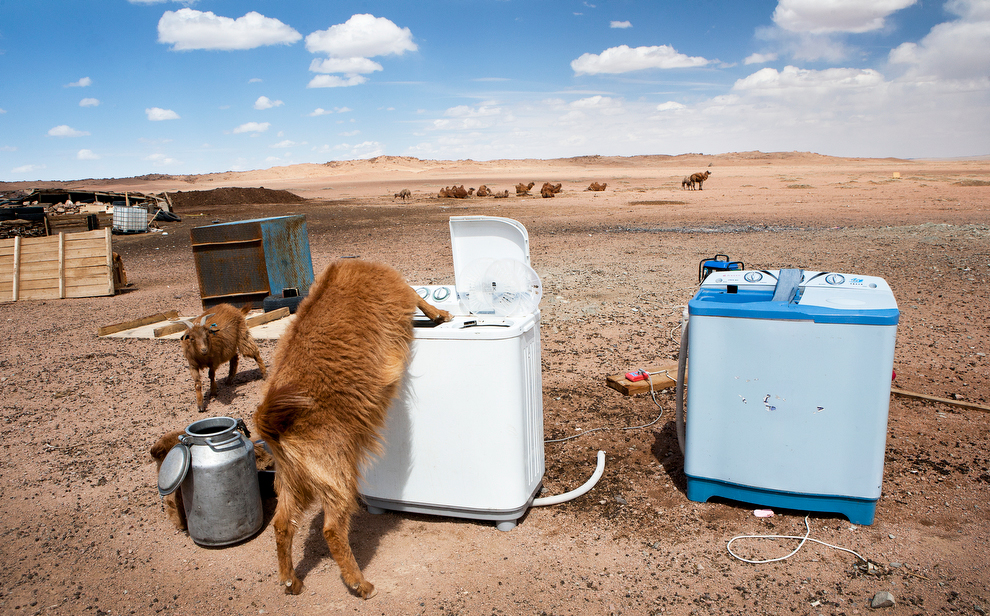
A thirsty goat drinks from a laundry machine in the Gobi Desert. Along with herding, family members here work at a nearby mine, providing extra income for amenities like this solar-powered washing machine. (Taylor Weidman/The Vanishing Cultures Project) #

A Mongolian woman feeds milk to a lamb with a recycled soy sauce bottle. (Taylor Weidman/The Vanishing Cultures Project) #

Two Mongolian youth slaughter goats and sheep at a countryside resort for wealthy city dwellers. Mongolian men slaughter these animals by making a small incision in the chest , reaching into the cavity, and pinching or snapping the aorta so the animal bleeds out internally. (Taylor Weidman/The Vanishing Cultures Project) #

Two wrestlers compete at a small Naadam festival in the countryside. Naadam was traditionally a celebration of victorious conquests, but in the Soviet era, the celebration was organized into a yearly, nationwide festival. (Taylor Weidman/The Vanishing Cultures Project) #
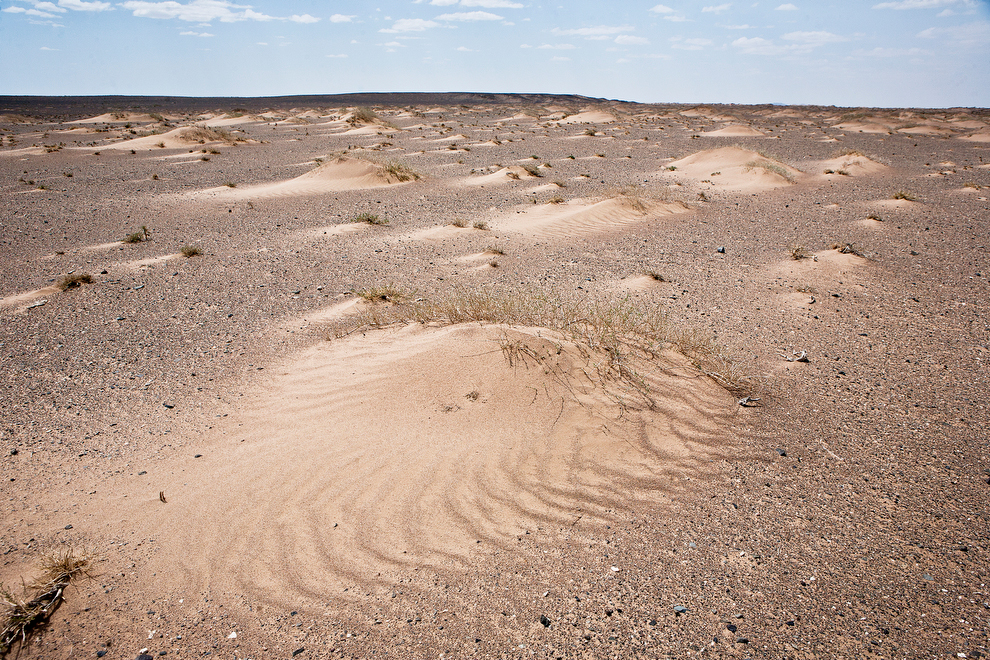
Decreased precipitation and stronger winds, a product of climate change, has led to the erosion of fertile topsoil and the expansion of the Gobi Desert. (Taylor Weidman/The Vanishing Cultures Project) #
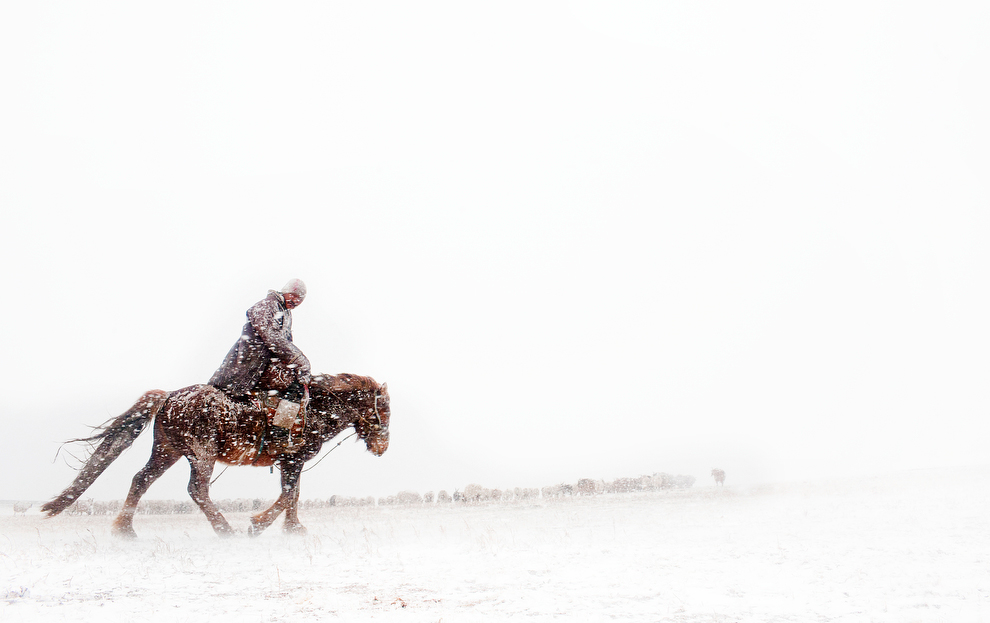
A herder rides out to collect his animals during a snowstorm. Over the past decade, Mongolia has experienced an uncommonly high number of dzud - severe winters that decimate herd populations. (Taylor Weidman/The Vanishing Cultures Project) #
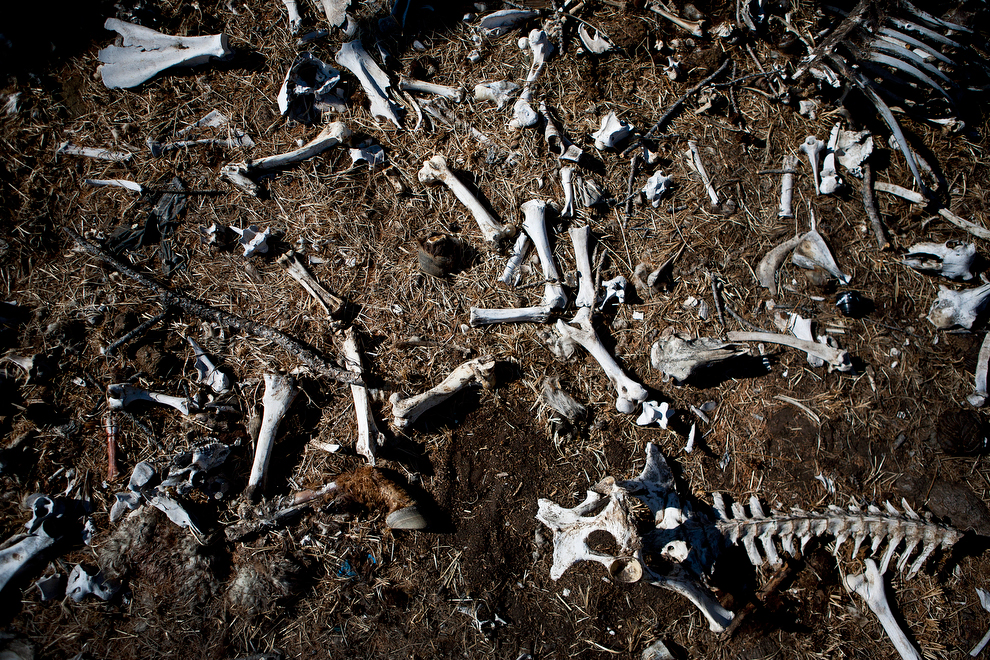
In Azraga county, a pile of bones from animals killed during the 2010 dzud lies on the frozen ground. Azraga has been especially unlucky. The winter of 2012 was relatively mild in most of Mongolia, but in this region, a localized dzud killed an estimated 30 percent of the livestock. (Taylor Weidman/The Vanishing Cultures Project) #

After the closing of a large, Soviet coal mine in Nalaikh, a town about 35 kilometers from Ulaanbaatar, many small mining operations took over. These small mines often employ herding families who have had to give up life on the steppe. (Taylor Weidman/The Vanishing Cultures Project) #
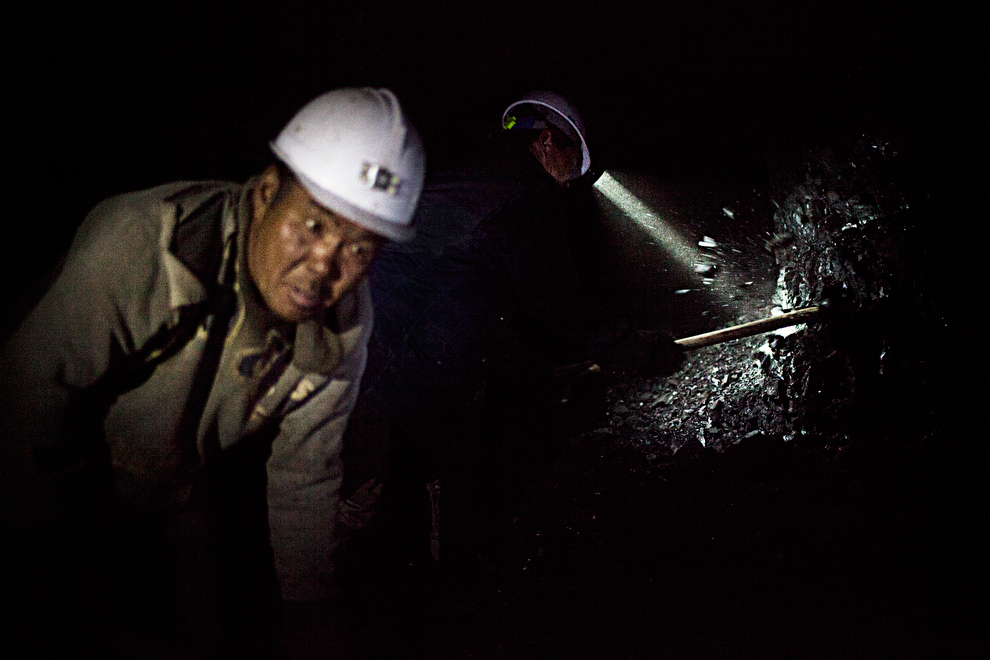
Mining, though dangerous, is an attractive employment option for former herders whose levels of education often don't extend beyond grade school. (Taylor Weidman/The Vanishing Cultures Project) #
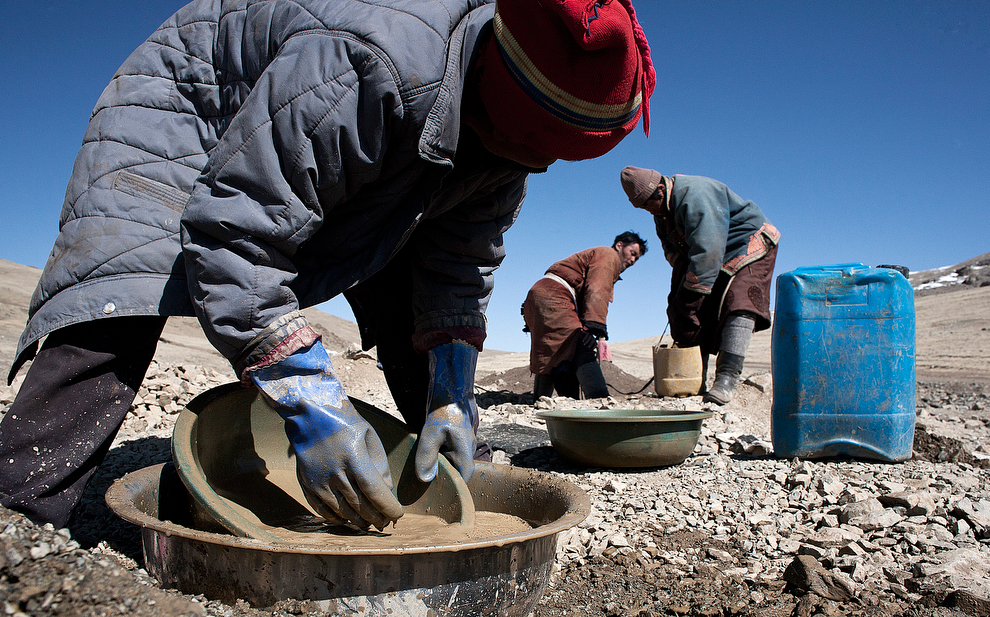
Illegal miners pan for gold on the steppe. After a spate of incredibly harsh winters wiped out many herds, marginalized herders looked for new occupations, including gold mining. (Taylor Weidman/The Vanishing Cultures Project) #

The ger districts that ring the capital city, Ulaanbaatar, house a permanent population of displaced nomads. During the winter, Ulaanbaatar is the second most air-polluted capital in the world due largely to coal burning. (Taylor Weidman/The Vanishing Cultures Project) #
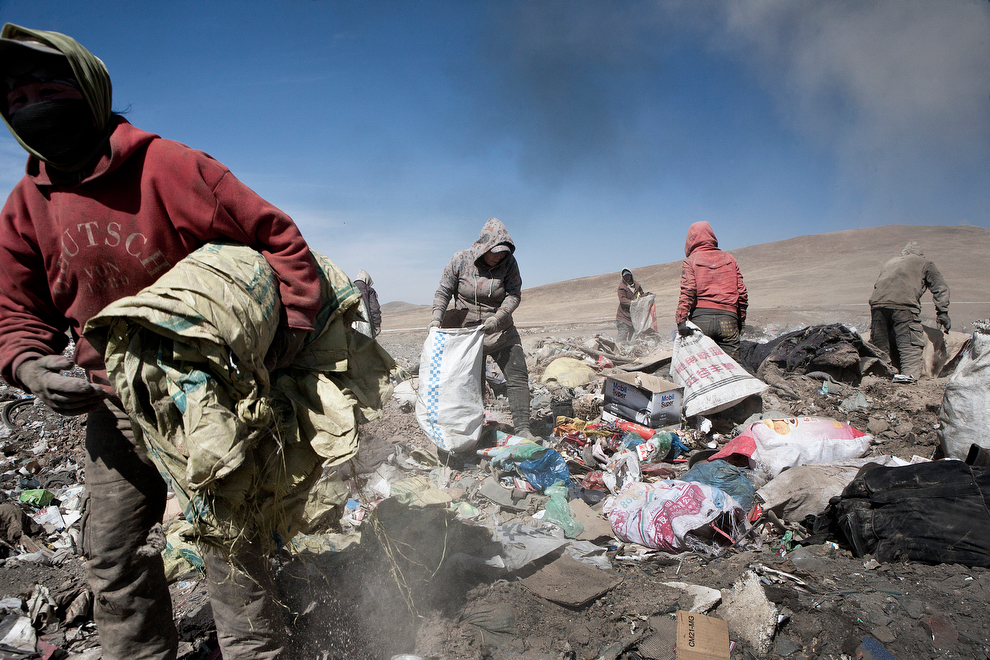
Residents of the ger districts collect recyclable and resellable materials from a trash dump in Ulaanbaatar. Unemployment in the ger districts hovers around 16 percent. (Taylor Weidman/The Vanishing Cultures Project) #

A Mongolian boy brings water to his home in the ger district. Housing 70 percent of Ulaanbaatar's population, these ger camps have no sanitation services or running water and have high rates of unemployment, alcoholism and crime. (Taylor Weidman/The Vanishing Cultures Project) #
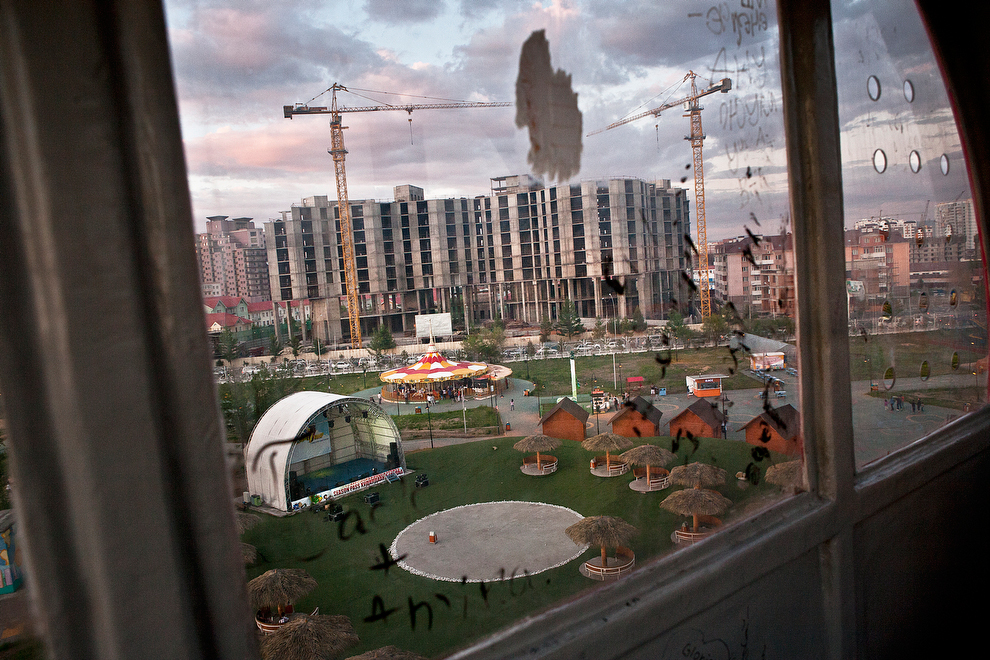
The view of a construction site in Ulaanbaatar from the ferris wheel of the city's Children's Park. Alongside private enterprises, the Mongolian government plans to build 100,000 new housing units for low-income families. (Taylor Weidman/The Vanishing Cultures Project) #
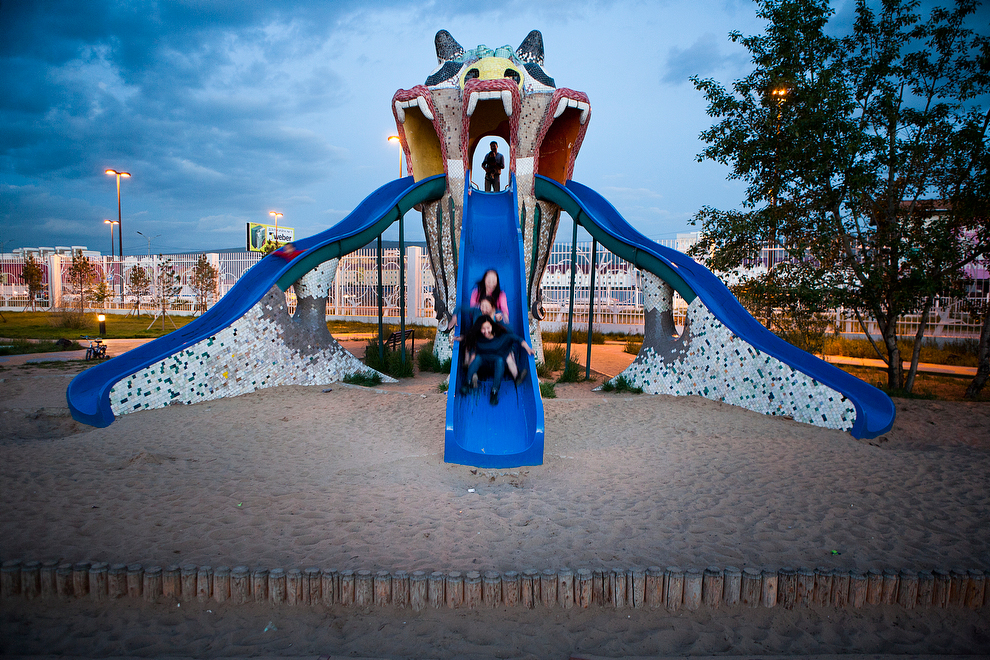
A slide in Ulaanbaatar's Children's Park. More than a quarter of Mongolia's population is under 14 years of age, making the country one of the youngest in Asia. (Taylor Weidman/The Vanishing Cultures Project) #
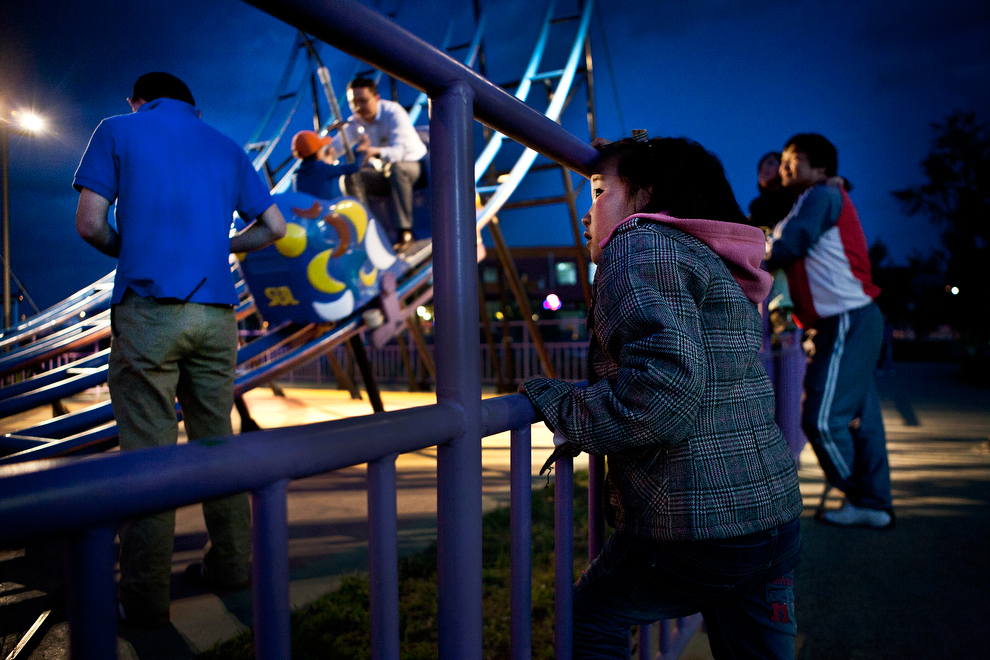
A young Mongolian girl watches people on a ride in Ulaanbaatar's Children's Park. More than a quarter of Mongolia's population is under 14 years of age, making the country one of the youngest in Asia. (Taylor Weidman/The Vanishing Cultures Project) #

A young mother drives through Ulaanbaatar, the capital of Mongolia. Cars are becoming increasingly common due to a booming economy based on mining. (Taylor Weidman/The Vanishing Cultures Project) #

The streets of Ulaanbaatar shine after a summer rainstorm. (Taylor Weidman/The Vanishing Cultures Project) #
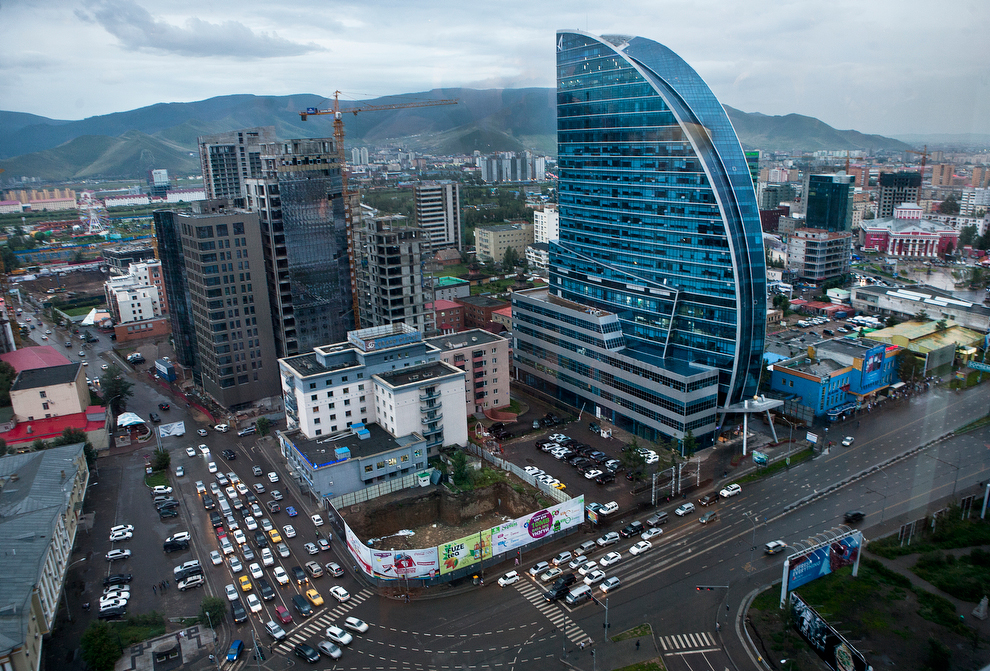
Blue Sky Tower is one of the most noticeable buildings in downtown Ulaanbaatar. Architecture in the capital is a mixture of grey Soviet bloc apartments and new office buildings and towers. (Taylor Weidman/The Vanishing Cultures Project) #
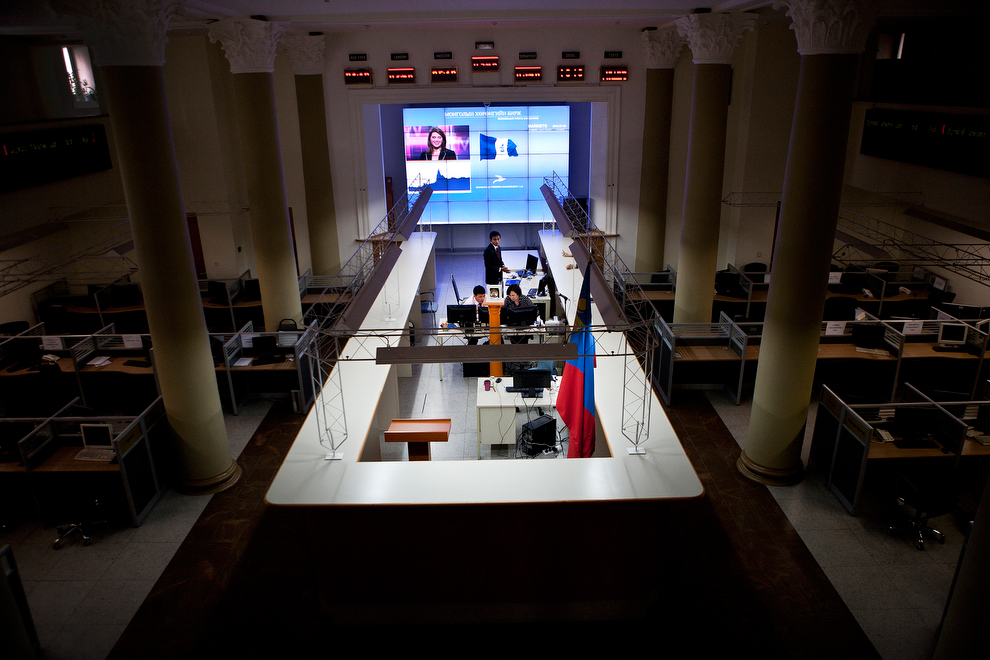
The Mongolian stock exchange has seen incredible growth over the past decade. As recently as 2006, this was the world's smallest stock exchange, but it now lists over 300 companies with a combined capitalization of $2.3 billion. (Taylor Weidman/The Vanishing Cultures Project) #
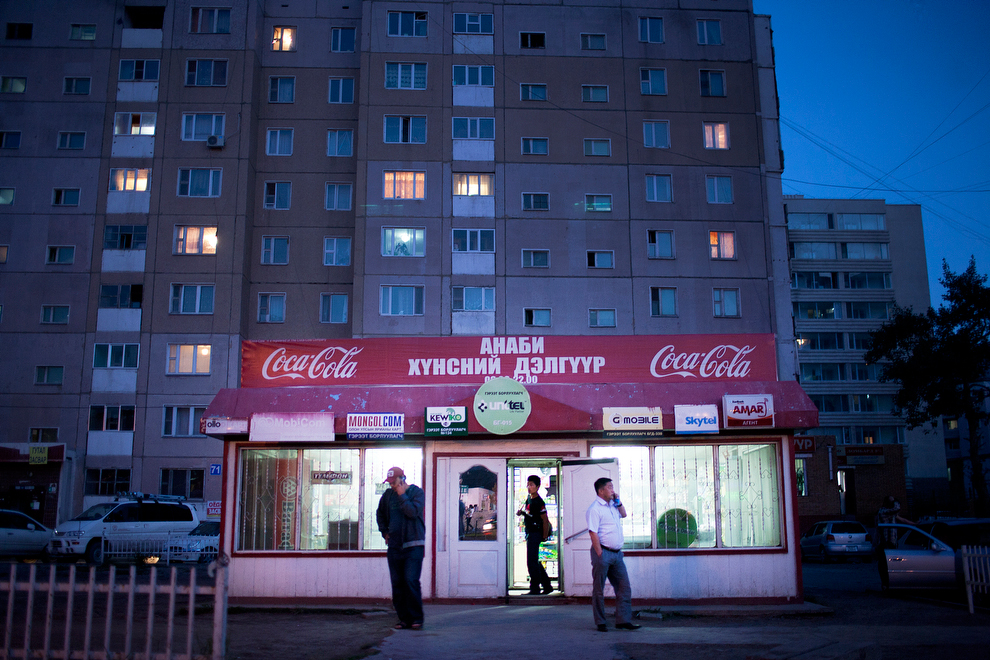
Mongolians visit a convenience store in Ulaanbaatar. (Taylor Weidman/The Vanishing Cultures Project) #
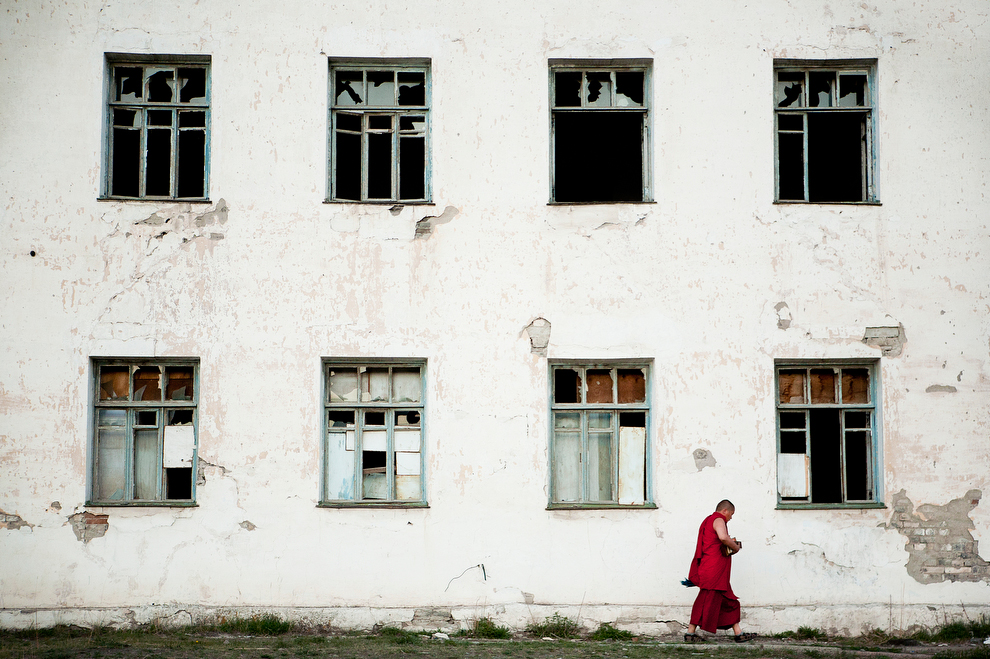
A monk walks past a derelict and abandoned Soviet hospital in Ulaanbaatar. Buddhism has re-emerged as a facet of national identity after the fall of the Soviet Union. (Taylor Weidman/The Vanishing Cultures Project) #
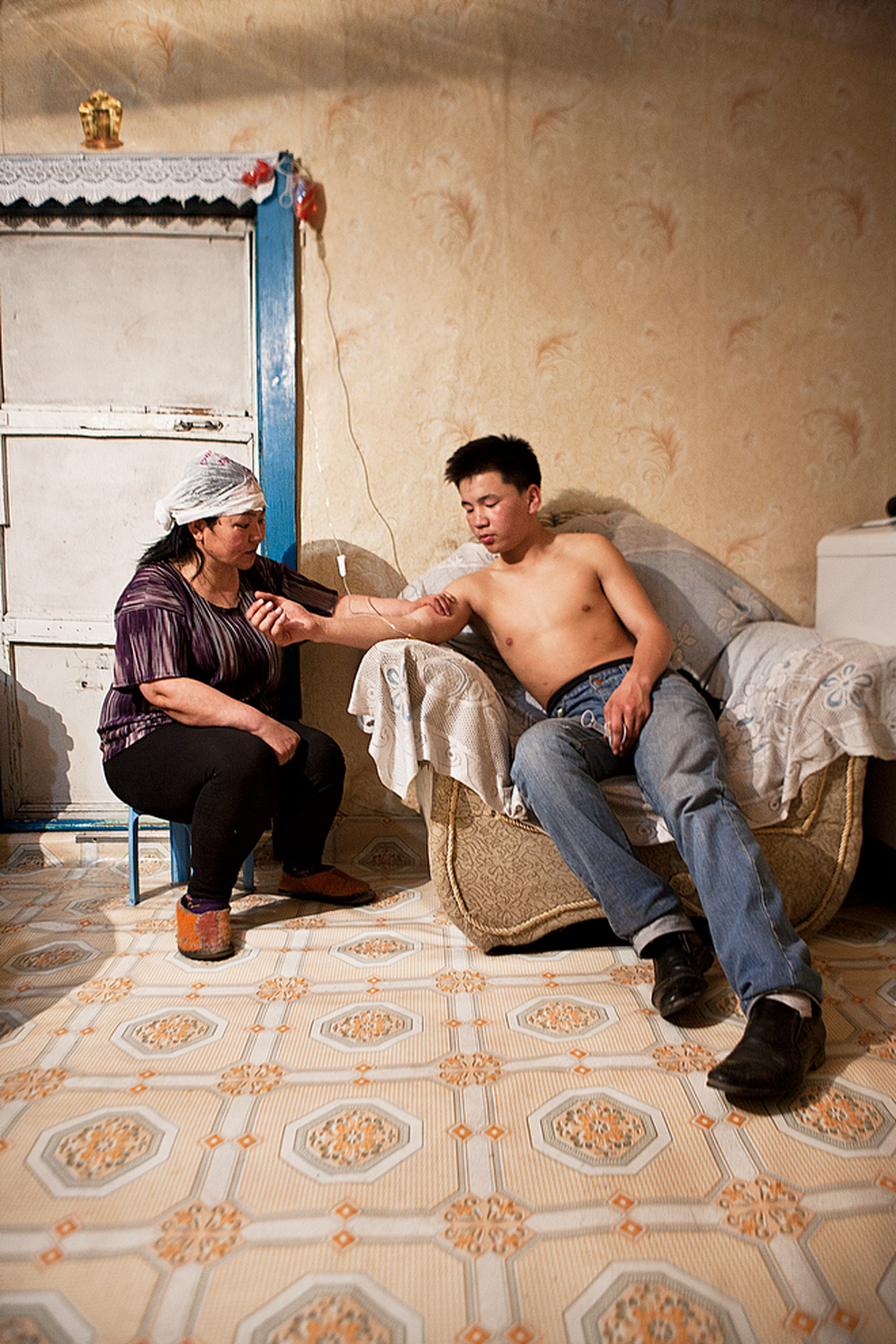
A mother administers an IV for her son. In the Soviet Era, modern medicine was introduced to Mongolia, decreasing infant mortality and increasing life expectancy. These factors have led to a population boom since the early 20th century. (Taylor Weidman/The Vanishing Cultures Project) #
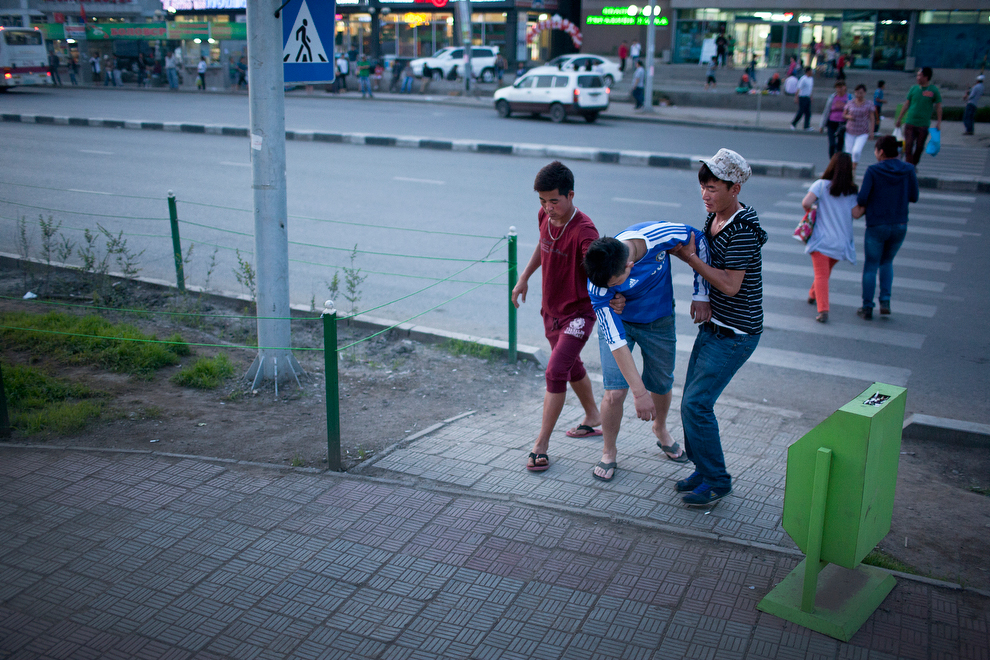
Two young men help their drunk friend to a waiting car. In 2006, a joint Mongolian Ministry of Health/World Health Organization study found that 22 percent of Mongolian men were dependent on alcohol--a rate that is 3 times higher than Europe. (Taylor Weidman/The Vanishing Cultures Project) #
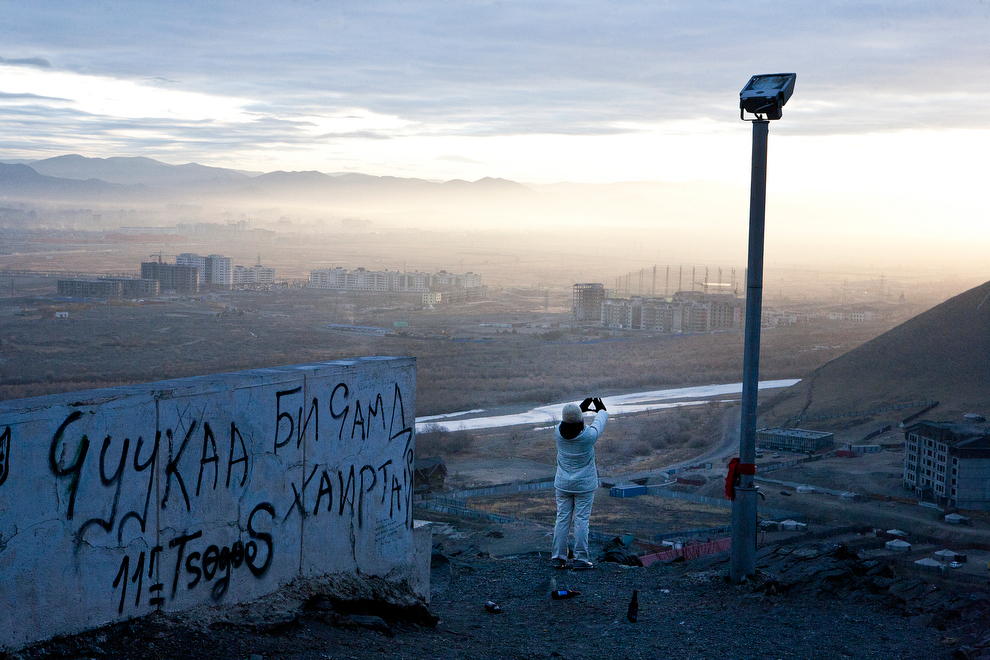
A woman stretches on a hilltop overlooking Ulaanbaatar's sprawl. With the fastest growing economy in the world in 2011 and a constant stream of rural-to-urban migrants, Mongolia's capital is expanding quickly. (Taylor Weidman/The Vanishing Cultures Project) #





























No comments:
Post a Comment